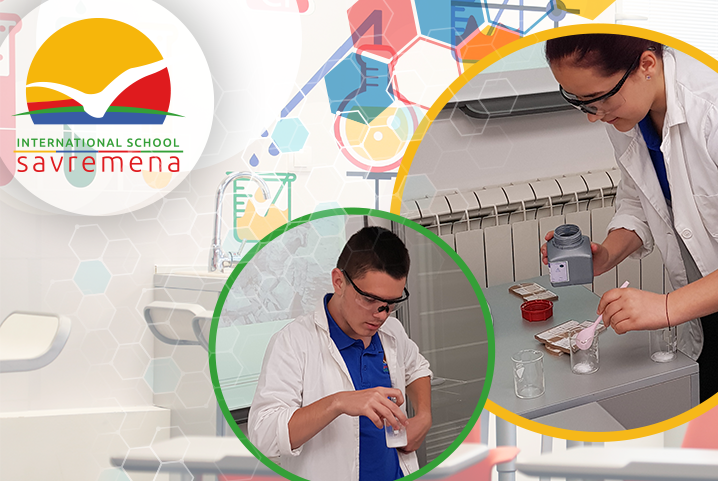
Weather is a natural phenomenon that affects our lives on a daily basis, so it is very important that we understand how it works, and comprehend the processes that result in different weather conditions.
Although weathering is a topic covered in geography lessons, it is impossible to explain it without mentioning chemical processes.
Interdisciplinary geography and chemistry lesson
This is why geography teacher Vladimir Milošević and chemistry teacher Miloš Vukobradović came up with the idea to teach this topic together in an interdisciplinary lesson that took place on 10 May.
Knowing that Year 10 students will remember and understand more if they learn from experiments and practical application rather than through theory, the teachers decided to organise a series of different experiments which would show their students how different weather conditions happen in nature.

During the lesson, the students were given as many as six different experiments which simulated the chemical reactions resembling those occurring in the atmosphere. They were given eggs to freeze and then thaw, so they were able to imagine that the same process that happened to the shell of the egg happens to stones and the Earth’s crust.
Then they heated a terracotta tile to see how temperature changes from hot to cold affect rocks and cause them to crack. The third experiment showing how pressure affects the Earth’s crust layers was done by pushing straws of spaghetti against one another. In the other three experiments, Savremena’s students investigated features of rocks, and were amazed to see how blue stone crystalises around a string. By observing these stones, they were able to understand how holes form in stones.
We are certain that Savremena’s little scientists have learnt a lot in this interesting lesson and that they had loads of fun while still learning through experiments. Knowing how much its students love interdisciplinary lessons such as this one, International School Savremena strives to organise as many of them as possible.

















